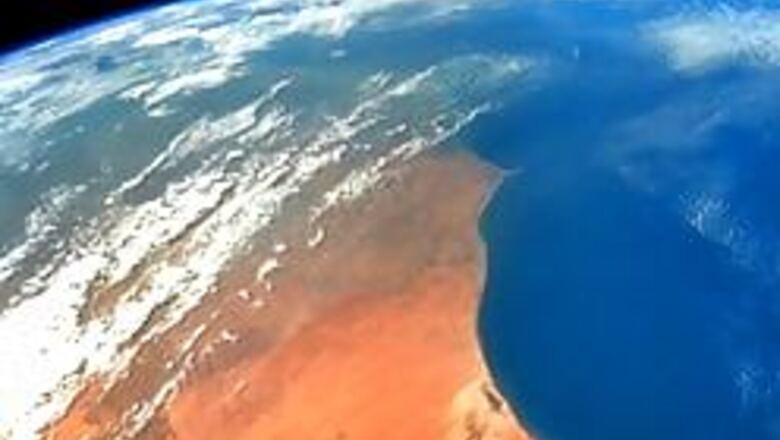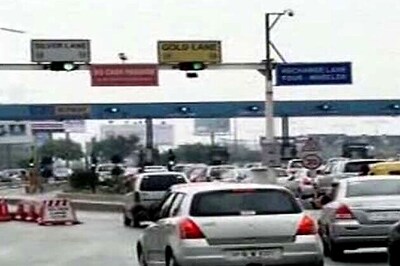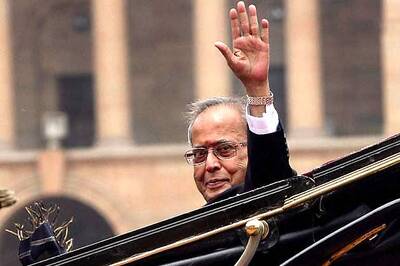
views
New York: Whoever it was probably lived a few thousand years ago, somewhere in East Asia: Taiwan, Malaysia and Siberia all are likely locations. He—or she—did nothing more remarkable than be born, live, have children and die.
Yet this was the ancestor of every person now living on Earth—the last person in history whose family tree branches out to touch all 6.5 billion people on the planet today.
That means everybody on Earth descends from somebody who was around as recently as the reign of Tutankhamen, maybe even during the Golden Age of ancient Greece. There's even a chance that our last shared ancestor lived at the time of Christ.
"It's a mathematical certainty that that person existed," said Steve Olson, whose 2002 book Mapping Human History traces the history of the species since its origins in Africa more than 100,000 years ago.
It is human nature to wonder about our ancestors—who they were, where they lived, what they were like. But few people realise just how intricately that web connects them not just to people living on the planet today, but to everyone who ever lived.
With the help of a statistician, a computer scientist and a supercomputer, Olson has calculated just how interconnected the human family tree is. You would have to go back in time only 2,000 to 5,000 years—and probably on the low side of that range—to find somebody who could count every person alive today as a descendant.
Furthermore, Olson and his colleagues have found that if you go back a little farther—about 5,000 to 7,000 years ago —everybody living today has exactly the same set of ancestors. In other words, every person who was alive at that time is either an ancestor to all 6 billion people living today, or their line died out and they have no remaining descendants.
That revelation is "especially startling," statistician Jotun Hein of England's Oxford University wrote in a commentary on the research published by the journal Nature.
PAGE_BREAK
"Had you entered any village on Earth in around 3,000 BC, the first person you would have met would probably be your ancestor," Hein marveled.
It also means that all of us have ancestors of every color and creed. Every Palestinian suicide bomber has Jews in his past. Every Sunni Muslim in Iraq is descended from at least one Shiite.
How can this be?
It's simple math. Every person has two parents, four grandparents and eight great-grandparents. Keep doubling back through the generations—16, 32, 64, 128—and within a few hundred years you have thousands of ancestors.
It's nothing more than exponential growth combined with the facts of life. By the 15th century you've got a million ancestors. By the 13th you've got a billion. Sometime around the 9th century—just 40 generations ago—the number tops a trillion.
But wait. How could anybody—much less everybody—alive today have had a trillion ancestors living during the 9th century?
The answer is, they didn't. Imagine there was a man living 1,200 years ago whose daughter was your mother's 36th great-grandmother, and whose son was your father's 36th great-grandfather. That would put him on two branches on your family tree, one on your mother's side and one on your father's.
In fact, most of the people who lived 1,200 years ago appear not twice, but thousands of times on our family trees, because there were only 200 million people on Earth back then.
Simple division—a trillion divided by 200 million—shows that on average each person back then would appear 5,000 times on the family tree of every single individual living today.
But things are never average. Many of the people who were alive in the year 800 never had children; they don't appear on anybody's family tree. Meanwhile, more prolific members of society would show up many more than 5,000 times on a lot of people's trees.
PAGE_BREAK
Keep going back in time, and there are fewer and fewer people available to put on more and more branches of the 6.5 billion family trees of people living today. It is mathematically inevitable that at some point, there will be a person who appears at least once on everybody's tree.
But don't stop there; keep going back. As the number of potential ancestors dwindles and the number of branches explodes there comes a time when every single person on Earth is an ancestor to all of us, except the ones who never had children or whose lines eventually died out.
And it wasn't all that long ago. When you walk through an exhibit of Ancient Egyptian art from the time of the pyramids, everything there was very likely created by one of your ancestors—every statue, every hieroglyph, every gold necklace. If there is a mummy lying in the center of the room, that person was almost certainly your ancestor, too.
It means when Muslims, Jews or Christians claim to be children of Abraham, they are all bound to be right.
"No matter the languages we speak or the color of our skin, we share ancestors who planted rice on the banks of the Yangtze, who first domesticated horses on the steppes of the Ukraine, who hunted giant sloths in the forests of North and South America, and who labored to build the Great Pyramid of Khufu," Olson and his colleagues wrote in Nature.




















Comments
0 comment